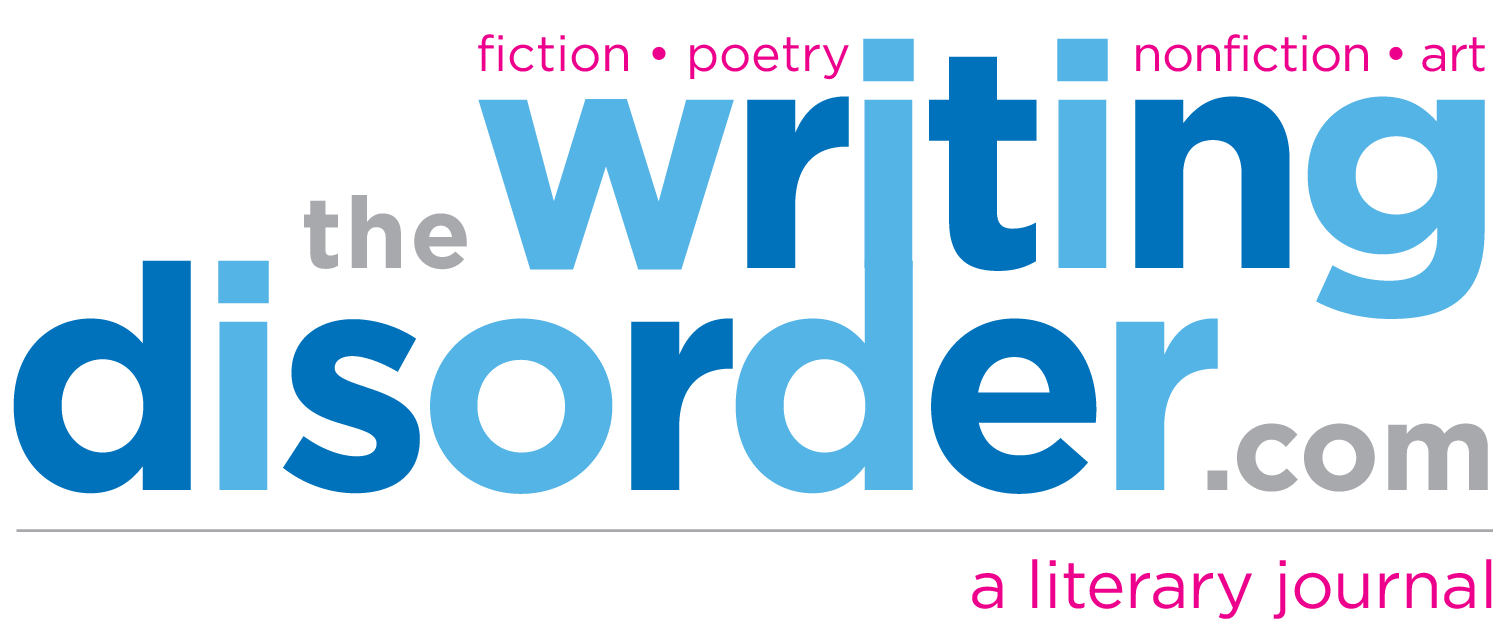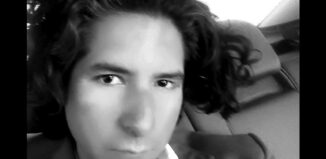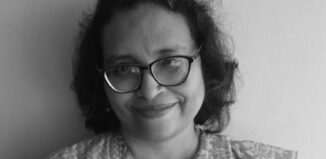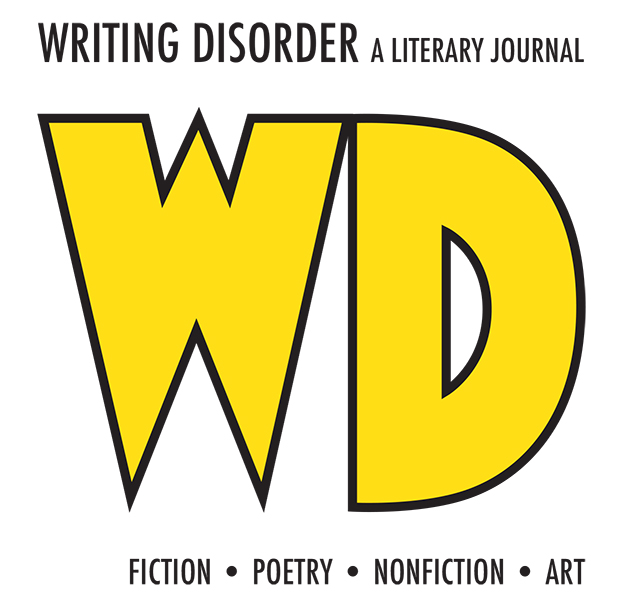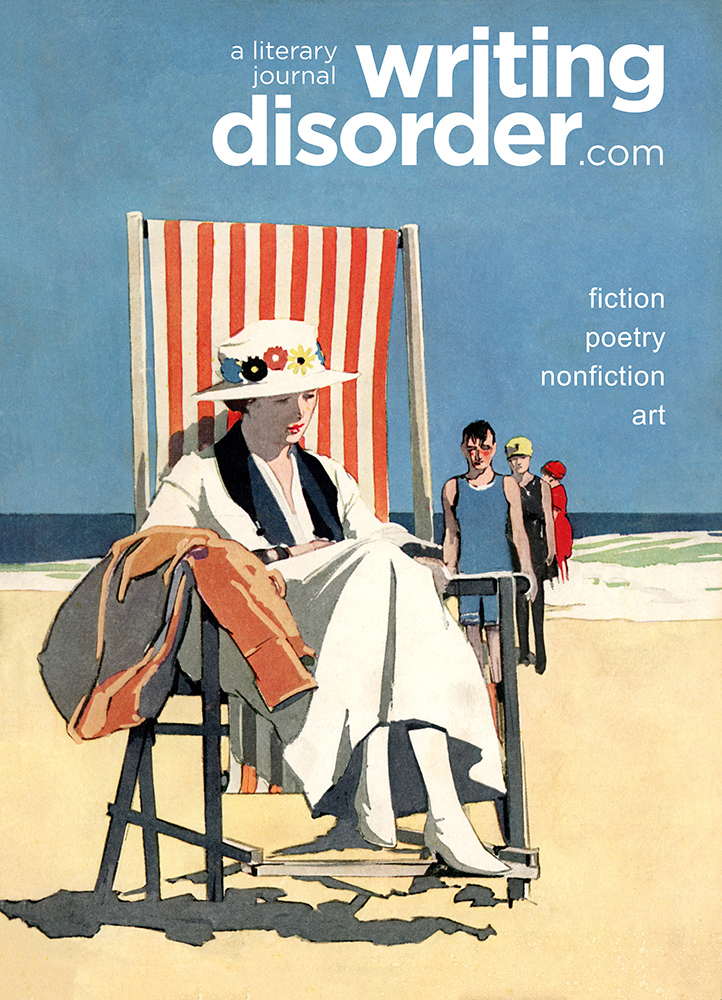Dada, Politics and Gender: Hannah Höch’s Cut with the Kitchen Knife and George Grosz’s Winter’s Tale
by Mahshid Gorjian
Abstract
The Berlin Dada movement developed as a radical response to post-World War I Germany’s sociopolitical issues, using photomontage, satire, and fragmentation to criticize authoritarianism, militarism, and capitalist exploitation.[1] This study investigates the political and aesthetic methods of Hannah Höch’s Cut with the Kitchen Knife and George Grosz’s Winter’s Tale, placing them within the larger context of Weimar-era visual culture. Höch’s photomontages deconstruct gendered images and nationalistic ideals, challenging the limitations put on women in art and society.[2] Meanwhile, Grosz’s horrific caricatures reveal the corruption of the bourgeoisie and the militaristic state, demonstrating the dehumanizing implications of modern capitalism.[3]
This study investigates how Höch and Grosz use fragmentation and distortion as means of political resistance, drawing on feminist art history and mechanization theories.[4] Höch’s involvement with the “Neue Frau” and the changing gender dynamics of Weimar Germany emphasizes the conflict between modernist goals and established patriarchal norms.[5] In contrast, Grosz’s futuristic depictions of mechanized urban life convey worries about technology, authority, and monitoring.[6] By examining these works through the lenses of gender, technology, and political critique, this research reviews Berlin Dada’s legacy as a revolutionary visual practice that continues to inspire contemporary discussions about art and resistance.
I. Introduction
The Role of Dada in Weimar Germany
Dada developed in response to the sociopolitical changes of early twentieth-century Europe, particularly the disappointment following World War I. Dadaists in Berlin took a political and anti-bourgeois mindset, criticizing militarism, capitalism, and authoritarianism through satire, photomontage, and collage.[7] Unlike its Zurich counterpart, which emphasized nihilism and absurdity, Berlin Dada was founded on revolutionary rebellion and dealt directly with the political instability of the Weimar Republic.[8] The movement’s rejection of creative traditions and embracing fragmentation reflected concerns about modernity, mechanization, and identity instability.[9]
Art as Protest: Höch and Grosz in Context
Hannah Höch and George Grosz established as key the main characters in the Dada movement, with their art reflecting Weimar Germany’s sociopolitical tensions. Höch, one of Berlin Dada’s few renowned women, questioned traditional gender roles and patriotic propaganda with her photomontages, particularly Cut with the Kitchen Knife, which destroyed and reassembled the male-dominated political and creative world.[10] Her work criticized both the patriarchal norms of German society and the tensions within the Dada movement, which frequently ignored its female members.[11]
In contrast, Grosz used grotesque caricature and harsh humor to criticize postwar Germany’s corruption, luxury, and militarization. Winter’s Tale, for example, revealed the bourgeoisie’s moral deterioration by showing figures of authority as disgusting mechanistic monsters lacking humanity.[12] His iconography represented serious concerns about the connection between capitalism and totalitarianism, providing harsh disapproval of Weimar-era politics.[13] Both artists used fragmentation and distortion to challenge conventional images of power and identity, consistent with Berlin Dada’s larger ambitions.[14]
Methodological Framework: Gender, Technology, and Political Critique
This study places Höch’s and Grosz’s works within overlapping themes of gender, technology, and political critique in Weimar-era visual culture. Drawing on feminist art history, it investigates how Höch crossed and opposed the male-dominated Dada aesthetic while dealing with depictions of the “Neue Frau” and gender diversity.[15] It also examines Grosz’s critique of modern urbanism and automation, delving into his catastrophic depictions of a dehumanized, capitalist society.[16]
The approach is based on Weimar photomontage scholarship, which sees Höch’s work as a radical intervention in visual culture, challenging political ideology and artistic norms.[17] It also includes talks of the Dada cyborg and the automation of the human body, particularly in Grosz’s grotesque imagery, which exposes the relationship between technology, violence, and power.[18] By interacting with these critical frameworks, this study reconsiders Dada’s significance in the Weimar period as a politically motivated investigation of gender, power, and visual representation, rather than a rejection of creative traditions.
II. Dada and the Socio-Political Landscape of Weimar Germany
The Origins and Evolution of Berlin Dada
Berlin Dada began as a direct response to the devastation of World War I and the political instability that occurred. Unlike the Zurich Dadaists, who embraced absurdity and anti-art gestures in response to the war, Berlin Dadaists used satire and photomontage to criticize the Weimar Republic’s problems and the remains of imperialist nationalism.[19] The movement was founded on radical leftist ideas, identifying with revolutionary principles and taking a strong anti-bourgeois position. Figures like George Grosz, John Heartfield, and Hannah Höch pioneered the use of visual fragmentation to portray the chaotic situation of postwar German society.[20]
Dada in Berlin was defined by its rejection of established artistic materials in favor of collage, photomontage, and caricature, all of which emphasized disjunction and disruption. These methods reflected the broken reality of Weimar Germany, when economic insecurity, political volatility, and social transformation challenged traditional means of representation.[21] Although the movement was short-lived, it had a significant impact on modern visual culture, providing the foundation for future avant-garde innovations, particularly in political art and conceptual activities.
Political Dadaism: Subversion Through Art
The Berlin Dadaists used art as a direct political engagement instrument to destroy the intellectual systems that supported authoritarianism and social injustice.[22] Photomontage, in particular, became a tool of resistance, allowing artists to distort and reconfigure mass-media imagery to reveal the contradictions of modern politics. Höch’s Cut with the Kitchen Knife exemplifies this approach by separating and rearranging images of male political figures, juxtaposing them with elements of modern industry and representations of the “Neue Frau” to highlight the tensions between progress and oppression in Weimar society.[23]
Grosz’s satirical drawings and paintings, such as Winter’s Tale, also targeted the governing elite, depicting industrialists, military officials, and politicians as hideous, mechanical beings motivated by greed and corruption.[24] His work reflected a generation that had witnessed war’s acts of violence and was now confronted with the failings of a fragile democracy.[25] Dadaists in Berlin identified as both artists and activists, utilizing their work to challenge passivity and question the authority of oppressive structures.[26]
The Impact of World War I and the Weimar Republic
The trauma of World War I greatly influenced Berlin Dada’s political and aesthetic methods. The conflict destroyed faith in established power institutions, leaving behind a sense of collapse and hopelessness that was reflected in the movement’s militant anti-authoritarian position.[27] Many Berlin Dadaists, like Grosz, were veterans or had firsthand experience with the devastation of mechanized conflict, which left them deeply skeptical of militarism and nationalism. This experience encouraged their determination to expose the stupidity and violence of postwar politics using irritating satire and radical visual methods.[28]
The instability of the Weimar Republic fueled Dada’s aggressive style. The economic problems, hyperinflation, and political fanaticism of the time provided ideal ground for artistic interventions criticizing both capitalist exploitation and authoritarian repression.[29] Dadaist works served as counter-narratives to the nationalist language and bourgeois values that took over popular culture, establishing the movement as an uprising in Weimar society. Finally, Berlin Dada’s involvement with social and political crises defined its artistic advances while also cementing its reputation as a radical intervention in twentieth-century visual history.
III. Hannah Höch’s Cut with the Kitchen Knife: A Feminist and Political Manifesto
Photomontage as a Revolutionary Medium
Cut with the Kitchen Knife, by Hannah Höch, shows photomontage’s radical potential as a visual and political instrument. Photomontage, which arose from Berlin Dada’s involvement with mass media, allowed for the deconstruction and reassembly of pictures, resulting in juxtapositions that showed Weimar society’s contradictions.[30] Unlike traditional painting, which frequently supported hierarchical representations, photomontage challenged conventional narratives by highlighting fragmentation and multiplicity.[31] Höch’s work, in particular, challenged traditional power structures by using visual culture to criticize the patriarchal, nationalist, and militaristic ideals that shaped postwar Germany.
Höch’s Cut with the Kitchen Knife combines newspaper clippings, images of political people, and industrial imagery to produce a bewildering yet insightful critique of Weimar politics.[32] The technique’s inherent instability, or ability to alter meaning through visual displacement, echoed the sociopolitical volatility of the moment. While photomontage was extensively used by Berlin Dadaists, Höch’s method was unique in that it focused on gender relations, placing women as active agents in the political environment rather than passive subjects.[33]
Gender and Androgyny in Weimar Visual Culture
Höch’s study of gender in Cut with the Kitchen Knife reflects broader conflicts within Weimar visual culture, particularly the breakdown of traditional gender norms. In Weimar Germany, androgynous individuals appeared in the media, reflecting the shifting limits between masculinity and femininity in modern society.[34] Höch’s photomontages featured pictures of combined, split bodies, rejecting traditional gender norms while embracing an ambiguous, dynamic style.[35]
Höch addressed and questioned contemporary concerns about female modernity by combining images of women with industrial and mechanical aspects. Her work addressed the rhetoric surrounding the “androgynous spectator,” in which the breakdown of gender boundaries allowed for a more flexible and broad interpretation of identity.[36] This androgynous iconography highlighted the contrasts in Weimar culture when women’s liberty was simultaneously welcomed and opposed by traditional groups.[37]
The “Neue Frau” and the Politics of Representation
A significant element in Cut with the Kitchen Knife is the image of the Neue Frau, or New Woman, a character that symbolized Weimar Germany’s cultural revolutions. The Neue Frau represented female freedom, professional ambition, and social mobility, but she was also an unpopular figure, drawing criticism from nationalist and patriarchal elements.[38] Höch’s work explores these conflicts by adding images of modern women into her photomontage, reflecting their ambivalent place in German culture.
Höch addressed the contradictions in current portrayals of women by strategically fragmenting and reassembling them. She questioned the devaluation of the feminine body in popular culture while also emphasizing women’s participation in political conversations.[39] This critique extended to the Berlin Dada movement, where, despite its radical politics, women artists such as Höch were frequently marginalized and excluded.[40] By reclaiming visual space for the Neue Frau, Höch’s work served as both an artistic and feminist action.
Höch’s Radical Critique of Nationalism and Militarism
Beyond gender, Cut with the Kitchen Knife was a clear disapproval of Weimar Germany’s political context, including its nationalist and military ideals. Höch deconstructed the visual language of power by using images of political figures, fragmented text, and industrial symbols, exposing its instability and absurdity.[41] The disorderly arrangement of parts reflected the fragmentation of the Weimar Republic, implying a condition of political chaos that Berlin Dada aimed to emphasize.
Höch’s rejection of nationalist images was consistent with Dada’s overall anti-war position, which opposed the glorification of militarism in postwar Germany. Her photomontage visually deconstructed these ideas, replacing inflexible power systems with disconnected, illogical compositions.[42] Höch positioned herself as both an artist and a political critic by employing photomontage to challenge dominant narratives and push for alternative, more diverse depictions of society.
IV. The Dada Cyborg: Technology, Fragmentation, and Identity
Mechanization of the Human Form in Dada Art
Berlin Dada artists were strongly concerned with the relationship between the human body and technology, using mechanistic imagery to criticize modernity’s impact on identity and autonomy. According to Matthew Biro, Dada’s images of the fragmented, robotic body expressed greater concerns about industrialization, surveillance, and capitalism’s dehumanizing impacts. Photomontage, in particular, enabled the depiction of hybridized, part-human, part-machine characters that represented both the benefits and risks of technological advancement.
George Grosz, for example, used caricatures of grotesque, mechanical characters to attack capitalism oppression, and authoritarianism by demonstrating the combination of humanity and technology.[43] Hannah Höch’s photomontages, on the other hand, investigated how technology influenced personal and collective identities, notably in terms of gender and power dynamics. Her use of photographic fragments suggested a fluidity of identity, challenging strict notions of selfhood in a mechanistic environment.[44]
The Intersection of Gender, Race, and Technology
Höch’s work used gender and technology images to examine how modernity recreated identity. By contrasting images of women with mechanical and industrial aspects, she demonstrated how technology could be both oppressive and liberating.[45] The androgynous and broken figures in her photomontages challenged traditional concepts of femininity, reflecting Weimar-era concerns about gender roles’ vulnerability in a rapidly modernizing society.[46]
Beyond gender, Höch investigated racial representation in the context of technical and cultural changes. As Germany struggled with colonial language and ethnographic images, colored bodies were commonly portrayed as “primitive” in contrast to the mechanical contemporary European figure. Höch’s photomontages deconstructed these radicalized clichés, calling into question photography and mass media’s influence on conceptions of non-European identities. Her work thus reflected a broader critique of how technology-enabled and produced racial and gendered gaps in visual culture.[47]
Höch’s Critique of Ethnographic and Colonial Representation
One of Höch’s most important contributions to Dadaist critique was her critique of ethnographic representation, particularly in Cut with the Kitchen Knife and following works such as From an Ethnographic Museum.[48] By combining imagery from colonial exhibitions and juxtaposing it with European modernism, Höch showed the artificial structure of racial hierarchies, as well as the role of visual culture in perpetuating colonial ideology.
Her photomontages challenged the binary opposition between “modern” and “primitive,” arguing that both categories were false constructs intended to sustain power structures. Höch deconstructed these narratives using fragmentation and visual reassembly, exposing how technological and political pressures affected both gender and racial identities.[49] She criticized the role of mass media in promoting colonial ideas while also emphasizing the fluid and created nature of identity in the modern period.
V. George Grosz’s Winter’s Tale: Satire, Protest, and Dystopian Vision
The Role of Caricature and Photomontage in Grosz’s Work
George Grosz’s use of caricature and photomontage served as a sharp critique of Weimar Germany’s political and social structures. His grotesque and exaggerated representations of military leaders, capitalists, and bureaucrats revealed the governing elite’s depravity and hypocrisy.[50] Unlike typical political cartoons, Grosz’s work blended cruel sarcasm with a clear visual language that dehumanized his protagonists, depicting them as mechanistic, soulless beings driven by greed and oppression. This technique was consistent with Berlin Dada’s overall objective of destroying authoritarian images and undermining traditional artistic representation.[51]
Photomontage, while more commonly identified with artists such as John Heartfield and Hannah Höch, played an important role in Grosz’s style. His works fragmented and twisted the human figure, reflecting the Weimar Republic’s shattered political landscape. Grosz constructed a gloomy view of Germany by combining caricature with modernist visual methods, reflecting both past failures and worries about an uncertain future.[52]
Winter’s Tale as a Political Allegory
Grosz’s Winter’s Tale is a dramatic metaphor for Weimar Germany’s sociopolitical decline, depicting a world governed by violence, greed, and moral decay. Winter’s Tale’s characters corpulent capitalists, ugly troops, and debauched bureaucrats reflect the establishment of negative tendencies in postwar German society.[53] These twisted bodies, which frequently appear drunk, lustful, or physically deformed, represent bourgeois excesses and the Weimar Republic’s failure to establish democratic principles.[54]
Grosz’s depiction of the urban environment as chaotic and lawless added to the sense of approaching collapse. His work not only questioned modern politics but also predicted the development of fascism, warning of the dangers of unrestricted militarism and the elite’s role in the collapse of democratic systems.[55] Grosz wrote Winter’s Tale as a stinging critique of his time, employing allegory to highlight the underlying tensions that would soon explode into additional political instability.
The Art of Protest: Class Struggle and Bourgeois Decadence
Grosz’s artistic approach was tightly connected to his involvement with class struggle and rejection of bourgeois principles. His portrayal of businessmen and political officials as grotesque caricatures highlighted the widening gap between the working class and the ruling elite.[56] His critique went beyond individual people, focusing on the systemic corruption and exploitation that characterized Weimar Germany’s socioeconomic landscape. Grosz associated himself with radical leftist parties seeking to end capitalism oppression by presenting the bourgeoisie as awful and morally corrupt.[57]
Winter’s Tale’s visual excess, with its chaotic arrangement and exaggerated characters, reflected the decadence of a collapsing civilization. Grosz showed the inconsistencies of a republic that embraced democratic ideals while allowing for economic inequality and political instability. His protest art served as both a critique and a warning, emphasizing the instability of Weimar society and the oncoming prospect of totalitarianism.[58]
Weimar Urbanism and the Deconstruction of Power
The urban landscape in Winter’s Tale is critical to eliminating power relations and showing modernity’s vulnerability. Makela observes that Grosz’s representations of Berlin depict a city in chaos, with streets filled with violence, wickedness, and disruption in politics. Unlike modernist utopian ideals that celebrated technical progress and rational city planning, Grosz’s urban settings represent chaos and moral collapse. His art challenges the romanticized picture of the modern metropolis, depicting it as a battleground for clashing political ideologies and economic interests.[59]
Grosz’s image of Weimar urbanization is also linked to his broader critique of power. The governing class, described as monstrous and disconnected from reality, is portrayed as both a victim and a creator of this catastrophe. Grosz’s incorporation of his figures within the broken urban landscape implies that power is a fiction that is continually challenged and transformed by social forces.[60] This breakdown of authority is consistent with Berlin Dada’s overall purpose of exposing the delusions that support oppressive political institutions.
Grosz’s Winter’s Tale provided a poor view of Weimar Germany that reflected its current instability while also predicting its political direction. His use of mockery, allegory, and urban critique established his work as a powerful act of resistance to the forces of nationalism, capitalism, and authoritarianism that threatened to define the age.[61]
VI. Dada’s Women and the Limits of German Modernism
The Marginalization of Women Artists in Dada
Although the Berlin Dada movement positioned itself as an anti-establishment and revolutionary force, its internal dynamics frequently mirrored the patriarchal systems it aimed to destroy. Women artists, notably Hannah Höch, were typically neglected in the movement, with their contributions overlooked by their male colleagues.[62] Despite her pioneering work in photomontage and her insightful critique of gender and power, Höch was met with rejection from fellow Dadaists, who frequently disregarded her work or pushed her aside. The movement’s radical rhetoric did not always transfer into an equal artistic space, maintaining the gendered inequalities that existed in modernist art circles.[63]
While Höch was one of the few women actively involved in Berlin Dada, she was frequently portrayed as an outsider within the group. Male Dadaists, including Raoul Hausmann, with whom Höch had a complicated personal and professional connection, sometimes neglected the feminine aspects of her work. This erasure echoes broader developments in early twentieth-century modernism, in which women’s artistic contributions were frequently reduced or removed from current accounts of avant-garde innovation.[64]
Höch in the Context of Feminist Art Historiography
Höch’s work has been evaluated in feminist art historiography, which has helped to restore her standing in Dada and modernist studies. Scholars have emphasized her extreme involvement in gender politics, emphasizing how her photomontages ignored standard portrayals of women and challenged dominant ideas.[65] Höch’s works, particularly Cut with the Kitchen Knife, criticize both the gender structures of the Weimar Republic and the male-dominated avant-garde movements that attempted to redefine modernity without fully addressing women’s roles in that transformation.[66]
Feminist academics have also explored Höch’s work in the larger context of women’s participation in avant-garde movements, pointing out that Dada historiography has frequently disregarded female artists’ contributions. Contemporary art historians have shed light on how Höch’s work linked with feminist conversations, both at the time and in later theories, by recovering her position within Berlin Dada.[67] This critical re-evaluation calls into question the traditional, male-centered narratives of modernism and emphasizes the importance of including feminist viewpoints in the study of avant-garde art.[68]
Challenging Gender Norms in Dadaist Aesthetics
Höch’s photomontages actively eliminated and rebuilt gender identities, establishing her work as a significant contribution to Dadaist aesthetics. She showed the weakness of gender norms and attacked the rigid binaries that defined Weimar-era cultural discourse using fragmentation, juxtaposition, and visual irony.[69] Her depictions of androgyny, hybridity, and nonconforming identities challenged the era’s traditional conceptions of women, instead giving a vision of fluid and developing gender identities.
Höch addressed contemporary discussions about women’s responsibilities in society by including imagery of the Neue Frau a symbol of modern femininity linked with independence and social progress while also challenging the superficiality of these portrayals.[70] Her critical attitude on the visual production of femininity established her work as an early feminist criticism of media culture, foreshadowing future discussions of gender performativity and representation in art.[71]
Höch’s long-term concern with gender disturbed both the political establishment and the creative movements that claimed to oppose it. Her work illustrates the tensions found in avant-garde groups, where radical aesthetics frequently coexisted with established gender beliefs. By opposing these limitations, Höch not only broadened the scope of Dadaist aesthetics but also laid the framework for future feminist art practices.[72]
VII. Conclusion: Reassessing the Legacy of Höch and Grosz
The Enduring Political Relevance of Dada
Dada’s influence goes beyond its immediate historical setting, serving as an important reference point for modern political and creative struggle. According to Hopkins, the movement’s radical use of satire, photomontage, and protest aesthetics continues to drive artistic techniques that address authoritarianism and social injustice. Berlin Dada’s disruptions, particularly the works of Hannah Höch and George Grosz, highlight art’s persistent ability to expose contradictions, destroy oppressive myths, and question power structures. Their ability to represent social and political chaos through fragmentation and juxtaposition is still extremely significant in the face of modern crises, in which digital and mass media both shape ideological conceptions.[73]
Art as Resistance: Lessons from Weimar for the Contemporary Moment
The Weimar period, with its uncertain democracy, economic instability, and the rise of conservative forces, has remarkable similarities to today’s political landscape. Höch & Grosz’s work emphasizes artists’ roles as critical observers and activists, confronting governance failings and societal paradoxes through their visual language. Their techniques demonstrate how artistic intervention may serve as both documentation and resistance, challenging current views with humorous and subversive methods.[74]
Höch’s photomontages, in particular, set the tone for feminist and anti-fascist artistic activities by demonstrating how visual culture might be used to challenge dominant structure. Similarly, Grosz’s terrifying metropolitan landscapes warn of unrestricted governmental corruption and economic mismanagement. Their works serve as a reminder to contemporary artists and activists of visual media’s ability to undermine power narratives and provide sociopolitical cracks beneath the surface of modern society.[75]
Rewriting Art History: A Feminist and Political Reinterpretation
The reconsideration of Höch and Grosz in art historical conversation mirrors broader developments in how modernist movements are viewed via feminist and political lenses. Traditional Dada narratives have frequently emphasized male participants, undervaluing the important contributions of female artists such as Höch.[76] Feminist art historiography has attempted to correct these gaps by highlighting Höch’s work as fundamental to Dada’s critique of nationalism, gender, and media representation.[77]
Furthermore, Grosz’s legacy has been reframed to highlight his role in uncovering the connections between capitalism, authoritarianism, and urban modernity. His representations of Weimar-era sociopolitical chaos have resurfaced in discussions about modern populism and economic inequality. Scholars are expanding their knowledge of Dada’s revolutionary potential and how its techniques continue to be instructional for contemporary artistic and activist activities by reincorporating feminist and political critiques.[78]
Through this reconsideration, Höch and Grosz emerge not just as significant Dada figures, but also as critical voices in broader discussions about art, power, and resistance. Their work encourages art historians to look beyond formalist interpretations and consider the deeper political and social impact of avant-garde acts, ensuring that Dada’s radical spirit continues to inspire future generations.
Bibliography
Benson, Timothy O. 1993. “George Grosz and the Art of Protest.” Art Journal 52 (1): 66–74.
Biro, Matthew. 1994. “The New Man as Cyborg: Figures of Technology in Weimar Visual Culture.” New German Critique 62: 71–110.
2009. The Dada Cyborg: Visions of the New Human in Weimar Berlin. Minneapolis: University of Minnesota Press.
Dickerman, Leah. 2003. “Dada’s Discontent: Hannah Höch’s Cut with the Kitchen Knife.” October 105 (Summer): 105–118.
Horne, Victoria, and Lara Perry, eds. 2017. Feminism and Art History Now: Radical Critiques of Theory and Practice.London: I.B. Tauris.
Hopkins, David, ed. 2016. A Companion to Dada and Surrealism. Hoboken, NJ: Wiley-Blackwell.
Lavin, Maud. 1990. “Androgyny, Spectatorship, and the Weimar Photomontages of Hannah Höch.” New German Critique 51: 62–86.
1993. “Hannah Höch’s Cut with the Kitchen Knife: Gender, Dada, and Everyday Life.” The German Quarterly66 (4): 447–458.
Makela, Maria. 1997. “Hannah Höch’s From an Ethnographic Museum: Gender, Race, and the Politics of Cultural Translation.” The Art Bulletin 79 (3): 466–484.
Neutert, Natias. 2019. Lady Dada: Essays über die Bild(er)finderin Hannah Höch. Berlin: Lilienstaub & Schmidt.
Phillips, Victoria. 2020. “Reimagining Dada Through the Work of Beatrice Wood and Sophie Taeuber-Arp.” Journal Name XX (X): XX–XX.
Sawelson-Gorse, Naomi, ed. 2016. Women in Dada: Essays on Sex, Gender, and Identity. Cambridge, MA: MIT Press.
Zervigón, Andrés Mario. 2008. “A Political Education: George Grosz in the USA.” Oxford Art Journal 31 (2): 257–276.
BIO
Mahshid Gorjian is a multidisciplinary artist and Ph.D. student in Geography, Planning, and Design. With a background in Fine Arts and Creative Technologies, she explores the intersection of art, culture, and environmental studies. Her work focuses on digital painting, R programming language, GIS, and urban design, reflecting themes of tradition, identity, and resilience. Through her art, Gorjian aims to bridge past and present, using digital tools to document and celebrate cultural heritage.
[1] Hanne Bergius, “Dada Triumphs! Dada Berlin, 1917–1923: Artistry of Polarities,” Yale University Press, 2003.
[2] Maud Lavin, Cut with the Kitchen Knife: The Weimar Photomontages of Hannah Höch (New Haven: Yale University Press, 1993).
[3] Timothy O. Benson, “George Grosz and the Art of Protest,” Art Journal 52, no. 1 (1993): 66–74.
[4] Maria Makela, “Hannah Höch’s From an Ethnographic Museum: Gender, Race, and the Politics of Cultural Translation,” The Art Bulletin 79, no. 3 (1997): 466–484.
[5] Ruth Hemus, Dada’s Women (New Haven: Yale University Press, 2009).
[6] Matthew Biro, “The New Man as Cyborg: Figures of Technology in Weimar Visual Culture,” New German Critique, no. 62 (1994): 71–110.
[7] Matthew Biro, “The New Man as Cyborg: Figures of Technology in Weimar Visual Culture,” New German Critique, no. 62 (1994): 71–110.
[8] Maria Makela and Peter Boswell, The Photomontages of Hannah Höch (Minneapolis: Walker Art Center, 1996).
[9] Matthew Biro, “The New Man as Cyborg: Figures of Technology in Weimar Visual Culture,” New German Critique, no. 62 (1994): 71–110.
[10] Leah Dickerman, “Dada’s Discontent: Hannah Höch’s Cut with the Kitchen Knife,” October 105 (Summer 2003): 105–118.
[11] Ruth Hemus, Dada’s Women (New Haven: Yale University Press, 2009).
[12] Timothy O. Benson, “George Grosz and the Art of Protest,” Art Journal 52, no. 1 (1993): 66–74.
[13] Andrés Mario Zervigón, “A Political Education: George Grosz in the USA,” Oxford Art Journal 31, no. 2 (2008): 257–276.
[14] Maria Makela, “Hannah Höch,” in Three Berlin Artists of the Weimar Era: Hannah Höch, Käthe Kollwitz, Jeanne Mammen, ed. Louise R. Noun (Des Moines: Des Moines Art Center, 1994), 9–33.
[15] Marsha Meskimmon and Shearer West, eds., Visions of the “Neue Frau”: Women and the Visual Arts in Weimar Germany(Aldershot: Scolar Press, 1995).
[16] Matthew Biro, “The New Man as Cyborg: Figures of Technology in Weimar Visual Culture,” New German Critique, no. 62 (1994): 71–110.
[17] Maria Makela, “Hannah Höch’s From an Ethnographic Museum: Gender, Race, and the Politics of Cultural Translation,” The Art Bulletin 79, no. 3 (1997): 466–484.
[18] Matthew Biro, The Dada Cyborg: Visions of the New Human in Weimar Berlin (Minneapolis: University of Minnesota Press, 2009).
[19] Hanne Bergius, “Dada Triumphs! Dada Berlin, 1917–1923: Artistry of Polarities,” Yale University Press, 2003.
[20] Hanne Bergius, “Dada Triumphs! Dada Berlin, 1917–1923: Artistry of Polarities,” Yale University Press, 2003.
[21] Hanne Bergius, “Dada Triumphs! Dada Berlin, 1917–1923: Artistry of Polarities,” Yale University Press, 2003.
[22] Maria Makela and Peter Boswell, The Photomontages of Hannah Höch (Minneapolis: Walker Art Center, 1996).
[23] Maria Makela and Peter Boswell, The Photomontages of Hannah Höch (Minneapolis: Walker Art Center, 1996).
[24] Timothy O. Benson, “George Grosz and the Art of Protest,” Art Journal 52, no. 1 (1993): 66–74.
[25] Andrés Mario Zervigón, “A Political Education: George Grosz in the USA,” Oxford Art Journal 31, no. 2 (2008): 257–276.
[26] Maria Makela and Peter Boswell, The Photomontages of Hannah Höch (Minneapolis: Walker Art Center, 1996).
[27] Peter Chametzky, Objects as History in Twentieth-Century German Art: Beckmann to Beuys (Berkeley: University of California Press, 2010).
[28] Peter Chametzky, Objects as History in Twentieth-Century German Art: Beckmann to Beuys (Berkeley: University of California Press, 2010).
[29] Peter Chametzky, Objects as History in Twentieth-Century German Art: Beckmann to Beuys (Berkeley: University of California Press, 2010).
[30] Maud Lavin, “Androgyny, Spectatorship, and the Weimar Photomontages of Hannah Höch,” New German Critique, no. 51 (1990): 62–86.
[31] Leah Dickerman, “Dada’s Discontent: Hannah Höch’s Cut with the Kitchen Knife,” October 105 (Summer 2003): 105–118.
[32] Leah Dickerman, “Dada’s Discontent: Hannah Höch’s Cut with the Kitchen Knife,” October 105 (Summer 2003): 105–118.
[33] Maud Lavin, Cut with the Kitchen Knife: The Weimar Photomontages of Hannah Höch (New Haven: Yale University Press, 1993).
[34] Maud Lavin, “Androgyny, Spectatorship, and the Weimar Photomontages of Hannah Höch,” New German Critique, no. 51 (1990): 62–86.
[35] Marsha Meskimmon, We Weren’t Modern Enough: Women Artists and the Limits of German Modernism (Berkeley: University of California Press, 1999).
[36] Maud Lavin, “Androgyny, Spectatorship, and the Weimar Photomontages of Hannah Höch,” New German Critique, no. 51 (1990): 62–86.
[37] Marsha Meskimmon, We Weren’t Modern Enough: Women Artists and the Limits of German Modernism (Berkeley: University of California Press, 1999).
[38] Marsha Meskimmon, We Weren’t Modern Enough: Women Artists and the Limits of German Modernism (Berkeley: University of California Press, 1999).
[39] Marsha Meskimmon, We Weren’t Modern Enough: Women Artists and the Limits of German Modernism (Berkeley: University of California Press, 1999).
[40] Ruth Hemus, Dada’s Women (New Haven: Yale University Press, 2009).
[41] Maria Makela, “Hannah Höch’s From an Ethnographic Museum: Gender, Race, and the Politics of Cultural Translation,” The Art Bulletin 79, no. 3 (1997): 466–484.
[42] Maria Makela, “Hannah Höch’s From an Ethnographic Museum: Gender, Race, and the Politics of Cultural Translation,” The Art Bulletin 79, no. 3 (1997): 466–484.
[43] Matthew Biro, The Dada Cyborg: Visions of the New Human in Weimar Berlin (Minneapolis: University of Minnesota Press, 2009).
[44] Matthew Biro, The Dada Cyborg: Visions of the New Human in Weimar Berlin (Minneapolis: University of Minnesota Press, 2009).
[45] Maria Makela, “Hannah Höch,” in Three Berlin Artists of the Weimar Era: Hannah Höch, Käthe Kollwitz, Jeanne Mammen, ed. Louise R. Noun (Des Moines: Des Moines Art Center, 1994), 9–33.
[46] Maud Lavin, “Androgyny, Spectatorship, and the Weimar Photomontages of Hannah Höch,” New German Critique, no. 51 (1990): 62–86.
[47] Maria Makela, “Hannah Höch,” in Three Berlin Artists of the Weimar Era: Hannah Höch, Käthe Kollwitz, Jeanne Mammen, ed. Louise R. Noun (Des Moines: Des Moines Art Center, 1994), 9–33.
[48] Maria Makela, “Hannah Höch’s From an Ethnographic Museum: Gender, Race, and the Politics of Cultural Translation,” The Art Bulletin 79, no. 3 (1997): 466–484.
[49] Maria Makela, “Hannah Höch’s From an Ethnographic Museum: Gender, Race, and the Politics of Cultural Translation,” The Art Bulletin 79, no. 3 (1997): 466–484.
[50] Timothy O. Benson, “George Grosz and the Art of Protest,” Art Journal 52, no. 1 (1993): 66–74.
[51] Timothy O. Benson, “George Grosz and the Art of Protest,” Art Journal 52, no. 1 (1993): 66–74.
[52] Timothy O. Benson, “George Grosz and the Art of Protest,” Art Journal 52, no. 1 (1993): 66–74.
[53] Andrés Mario Zervigón, “A Political Education: George Grosz in the USA,” Oxford Art Journal 31, no. 2 (2008): 257–276.
[54] Andrés Mario Zervigón, “A Political Education: George Grosz in the USA,” Oxford Art Journal 31, no. 2 (2008): 257–276.
[55] Andrés Mario Zervigón, “A Political Education: George Grosz in the USA,” Oxford Art Journal 31, no. 2 (2008): 257–276.
[56] Timothy O. Benson, “George Grosz and the Art of Protest,” Art Journal 52, no. 1 (1993): 66–74.
[57] Timothy O. Benson, “George Grosz and the Art of Protest,” Art Journal 52, no. 1 (1993): 66–74.
[58] Timothy O. Benson, “George Grosz and the Art of Protest,” Art Journal 52, no. 1 (1993): 66–74.
[59] Maria Makela and Peter Boswell, The Photomontages of Hannah Höch (Minneapolis: Walker Art Center, 1996).
[60] Maria Makela and Peter Boswell, The Photomontages of Hannah Höch (Minneapolis: Walker Art Center, 1996).
[61] Timothy O. Benson, “George Grosz and the Art of Protest,” Art Journal 52, no. 1 (1993): 66–74.
[62] Ruth Hemus, Dada’s Women (New Haven: Yale University Press, 2009).
[63] Ruth Hemus, Dada’s Women (New Haven: Yale University Press, 2009).
[64] Ruth Hemus, Dada’s Women (New Haven: Yale University Press, 2009).
[65] Naomi Sawelson-Gorse, ed., Women in Dada: Essays on Sex, Gender, and Identity (Cambridge, MA: MIT Press, 2016).
[66] Naomi Sawelson-Gorse, ed., Women in Dada: Essays on Sex, Gender, and Identity (Cambridge, MA: MIT Press, 2016).
[67] Victoria Horne and Lara Perry, eds., Feminism and Art History Now: Radical Critiques of Theory and Practice(London: I.B. Tauris, 2017).
[68] Victoria Horne and Lara Perry, eds., Feminism and Art History Now: Radical Critiques of Theory and Practice(London: I.B. Tauris, 2017).
[69] Natias Neutert, Lady Dada: Essays über die Bild(er)finderin Hannah Höch (Berlin: Lilienstaub & Schmidt, 2019).
[70] Natias Neutert, Lady Dada: Essays über die Bild(er)finderin Hannah Höch (Berlin: Lilienstaub & Schmidt, 2019).
[71] Natias Neutert, Lady Dada: Essays über die Bild(er)finderin Hannah Höch (Berlin: Lilienstaub & Schmidt, 2019).
[72] Natias Neutert, Lady Dada: Essays über die Bild(er)finderin Hannah Höch (Berlin: Lilienstaub & Schmidt, 2019).
[73] David Hopkins, ed., A Companion to Dada and Surrealism (Hoboken, NJ: Wiley-Blackwell, 2016).
[74] David Hopkins, ed., A Companion to Dada and Surrealism (Hoboken, NJ: Wiley-Blackwell, 2016).
[75] David Hopkins, ed., A Companion to Dada and Surrealism (Hoboken, NJ: Wiley-Blackwell, 2016).
[76] Victoria Horne and Lara Perry, eds., Feminism and Art History Now: Radical Critiques of Theory and Practice (London: I.B. Tauris, 2017).
[77] Naomi Sawelson-Gorse, ed., Women in Dada: Essays on Sex, Gender, and Identity (Cambridge, MA: MIT Press, 2016).
[78] David Hopkins, ed., A Companion to Dada and Surrealism (Hoboken, NJ: Wiley-Blackwell, 2016).
